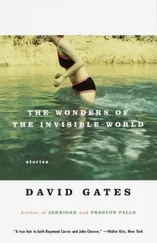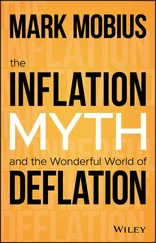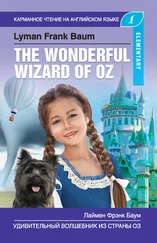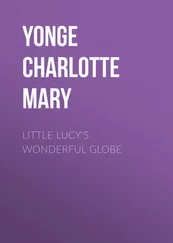She stares at him blankly.
“It's obvious,” continues Giraut. “It was Bocanegra. He betrayed my father. And then he tried to kill Koldo Cruz. I guess to protect himself. It all fits.”
“And now you are going to betray him,” she says. In a slightly lower voice.
“The money will go through my hands,” he says. “And the paintings as well. Bocanegra has got it in his head that I'm like a son to him. So he trusts me completely.” He pauses. “After what he did to my father.”
“And you weren't planning on telling me any of this?” she says. In a hurt tone. “Imagine Bocanegra thinks that I'm mixed up in all this. Imagine what he could do to a girl.”
There is a moment of silence. In spite of her words, Iris Gonzalvo's tone isn't the irritated tone of someone who has just realized that they are at the short end of a secret plan. In fact, it is more like the pitiful tone of someone that has just been set aside by someone they have special feelings for.
“I thought of something else I should tell you,” says Lucas Giraut finally. Looking at the ceiling beams again, through a pale cloud of cigarette smoke. “I was thinking of taking you with me when I steal the money and the paintings. You and Valentina.”
In the Years of Physical Impossibility, the terms in which said impossibility manifested itself were rigorously strict. Lucas's parents were never, ever seen together, not even in the Giraut family house in the Ampurdan. On the rare occasions that the entire family went to the house in the Ampurdan also known as Villa Estefanía, Lorenzo Giraut went there in his personal patriarchal car two days before the rest of the family. So when his wife and son arrived in the company car, he was already installed in his study with the windows covered by opaque curtains and it was impossible to see him beyond his occasional strolls at dusk along the breakwater or driving his car toward town. Watched by a boy with binoculars from one of the windows of the North Wing, also known as the Boy's Wing.
After a moment, Iris smiles. She points her head toward Giraut's crotch.
“I think your dick is small, too,” she says. “I'm not sure.”
CHAPTER 50. The Story's Ultimate Meaning
As the weeks pass and Iris Gonzalvo makes more visits to Travers's palace in the heart of bourgeois Jewish Paris, she has gotten used to her host's eccentricities. The strange place where Travers seems to spend all his time. Even his conversation topics. Now Iris flies to Paris a couple of times a week and a car takes her straight from the airport to the palace's porticoed patio. The sequence of events is always the same. When they are both sitting in front of the smoking salon's fireplace, they almost never mention the business that they supposedly should be doing, or the St. Kieran Panels. Most of the time Travers seems happy to have her keeping him company. He talks and she half listens, sometimes flipping through one of the magazines or catalogues that are strewn around the room. The lack of progress in the negotiation doesn't seem to upset anyone that she works for. Neither Giraut nor Bocanegra seems nervous. No news, Bocanegra said proudly to her one day, is good news. This afternoon, however, an absurdly cold afternoon in late February, Iris Gonzalvo is sitting as always in the armchair in front of the fireplace when Travers stands up. He goes to look for a book on one of the room's bookshelves and he opens it on the small table in front of Iris.
“You are an intelligent woman,” says Travers. Today he seems to be wearing the tattered remains of a silk dressing gown over his frayed wool sweater. All his clothing seems to have been rescued from some sort of natural disaster. “In addition to being very pretty. Tell me, please, from your heart, what do you think this painting means?”
Iris Gonzalvo leans forward a bit to better see the reproduction in the book that Travers is showing her. Beneath the inadequate light from a table lamp covered with a cloth. The title of the painting, according to the caption below the reproduction, is: And They All Hid in the Caves and Among the Mountain Crags. The painting shows some sort of hellish landscape. The sky is black and in the middle of it a black sun shines, surrounded by a crown of pale flames. There are fires on the horizon. The rocky landscape is filled with skeletons and dead people in pools of blood. The survivors crowd together inside caves and holes in the ground. They all look up at the sky in terror. They are all very pale. They embrace each other. Others are on their knees with their hands at their chests, praying. In general, it is clear that they are hiding from something, but the painting doesn't give enough information to understand what it is they're hiding from. Iris Gonzalvo recognizes the reproduction. It is one of the four paintings whose sale she is supposed to have been negotiating for weeks now. But she has no idea what it means. No one's explained that to her. They explained how much it's worth in the international market and how much the price will go up when it comes to light that the copies in the Hannah Linus Gallery are fakes. But nobody thought to give her an interpretation of the painting's meaning. Personally it reminds her of the covers of the heavy metal records her brothers listened to when she was a kid.
Travers is staring at her. Iris Gonzalvo decides to make up a response. It can't be worse than sitting there like an idiot and not saying anything, she thinks. She looks at the book. She points to the people hiding in the caves and the holes in the ground.
“All these people think that they're safe,” she says. She shrugs her shoulders. “But they don't have a chance. I don't think even one of them is going to make it. I've known people like that. My ex-boyfriend was like that.”
Travers nods, with a satisfied expression. Now he seems to be scratching a shred of his silk dressing gown, in a nervous gesture a doctor would probably find worrisome. He picks up the book with both hands and closes it. With the book under his arm, he nears a monogrammed lighter to Iris Gonzalvo, who uses it to light a cigarette. If there is some trace of relief in her face, luckily there isn't enough light for her host to see it.
“The story of the St. Kieran Panels is fascinating.” Travers nods to himself. In spite of his sloppy appearance, which could be taken for the eccentricity of the extremely rich, Iris Gonzalvo doesn't see anything about him that makes him look like a rich eccentric. “As fascinating as the story of their creator, Brother Samhael Finnegan. Although there is little information on his life, they say he painted locked up in his cell by the light of a single candle. They also say he spent thirty years without leaving his cell in the St. Kieran monastery. It seems he was agoraphobic and photophobic. Two illnesses that are much more common than people realize.” He heads to his cocktail cabinet filled with delicate-looking cut crystal bottles. He serves a couple of glasses of port and takes a cup in each hand. “In his day, of course, there was also the fear of the Apocalypse. Which they thought would arrive at some point near the millennium. All these things are in the paintings, of course. After his death, his legend grew throughout Ireland. They started calling him the Mad Monk of Limerick. His paintings were much rawer and much more terrifying than what people were used to seeing at the time. And there was the question of his last painting. The fourth in the series.” He puts one of the glasses into Iris Gonzalvo's hand. “Have you heard about the fourth painting, Miss DeMink?”
Iris Gonzalvo takes a sip from her glass of port.
“The one they covered with a sheet,” she says, remembering something Giraut had told her a couple of weeks earlier. “The one they didn't let people see.”
Читать дальше












